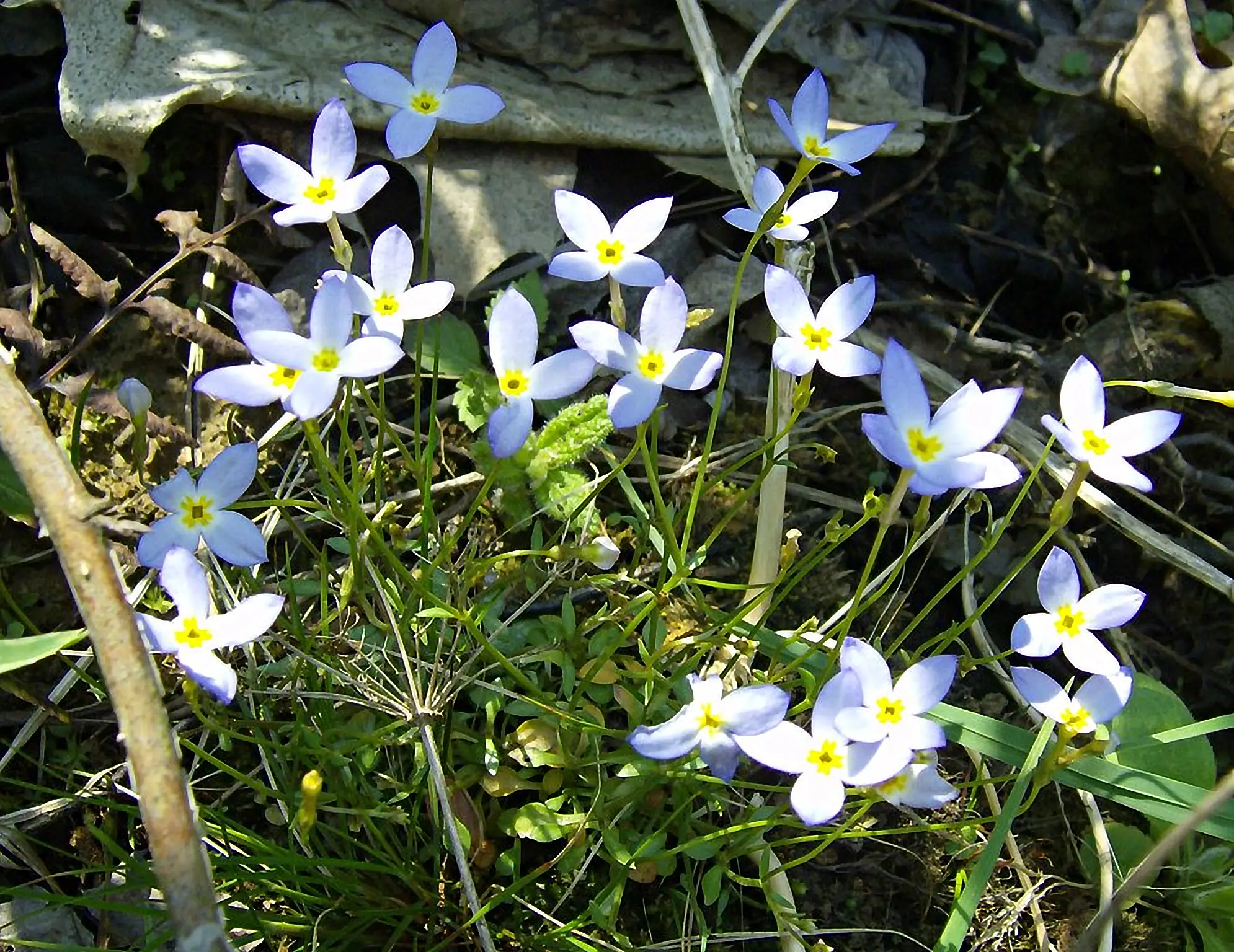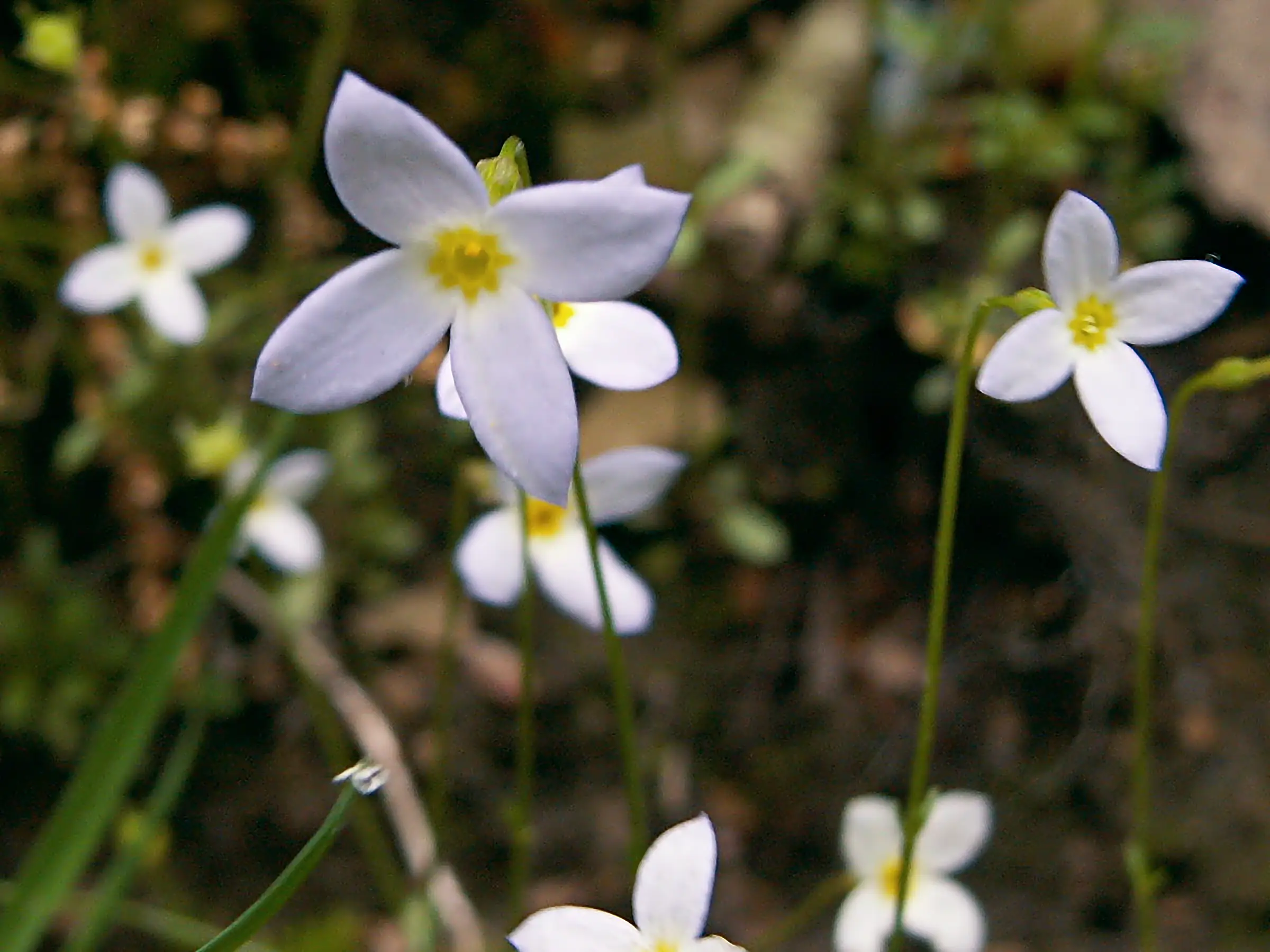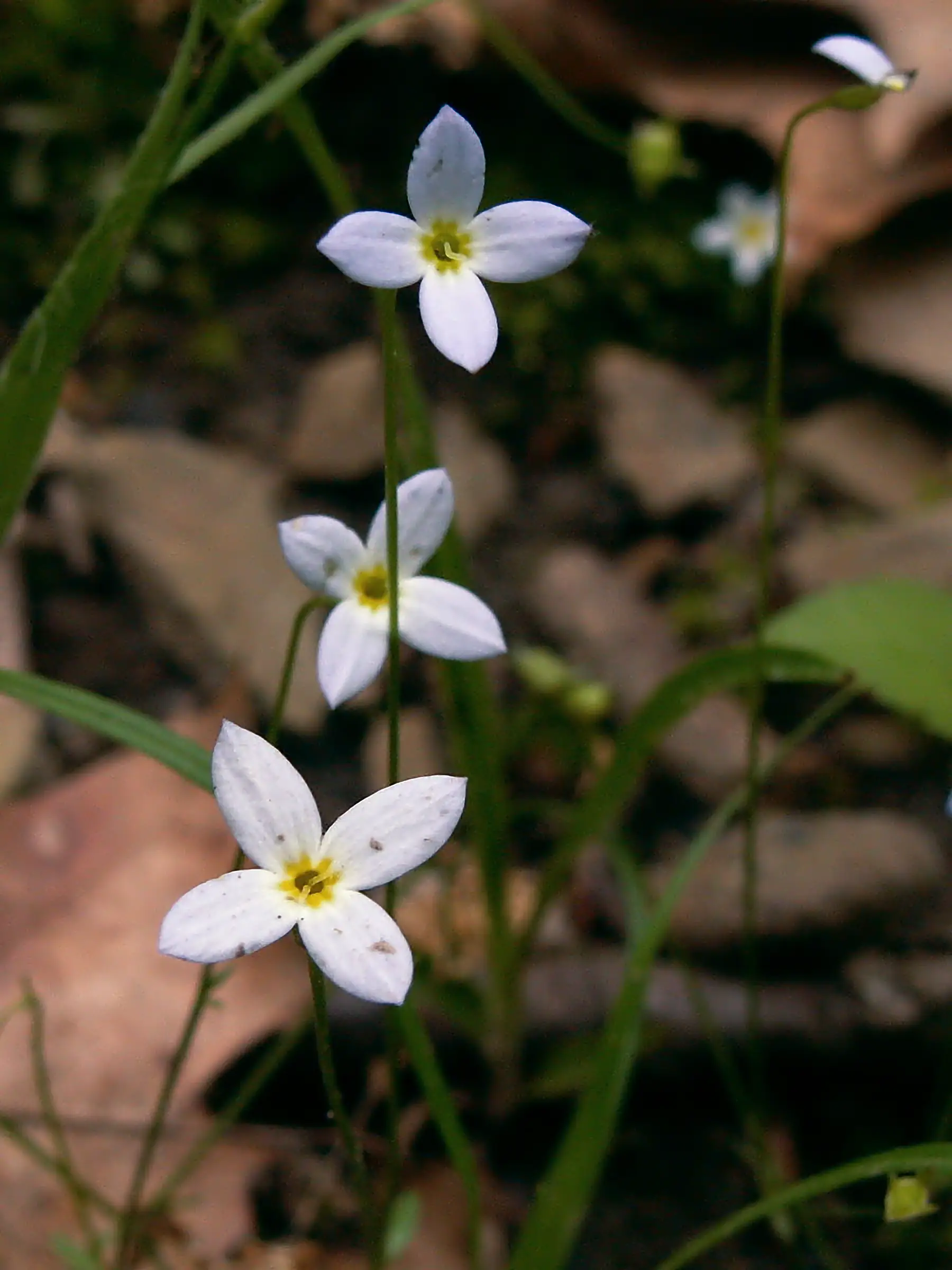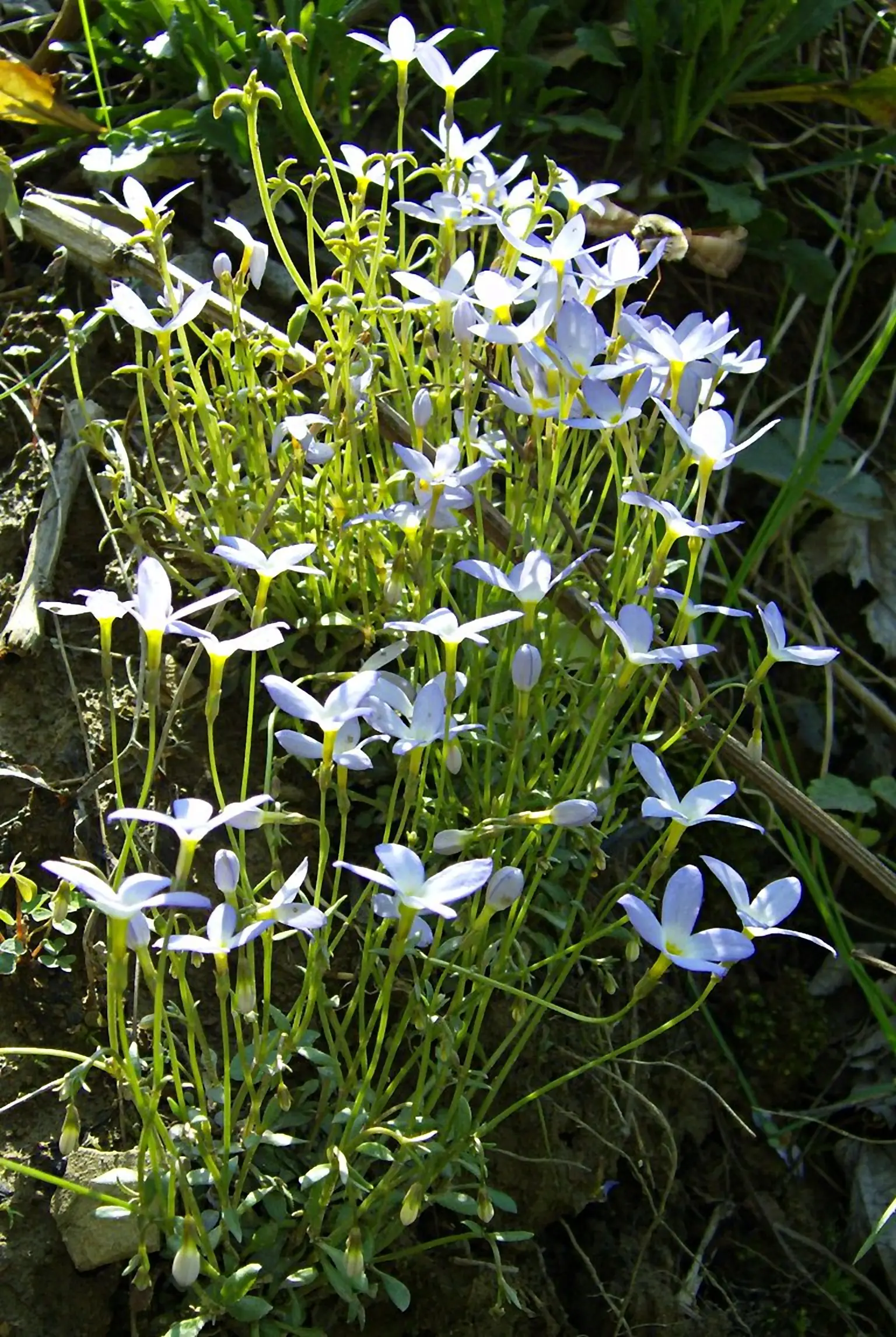 Photographed May 3.
Photographed May 3. Photographed May 3.
Photographed May 3.Also known as Quaker Ladies, these tiny blue flowers form tidy clumps in shaded lawns and roadsides. Small as the delightful four-petaled flowers are, they rise from a plant that seems tiny out of all proportion to the flowers. They generally bloom in late April or early May, but can continue to late spring.
 Photographed May 23.
Photographed May 23.
Gray describes the genus and the species:
HOUSTÔNIA L. Calyx 4-lobed, persistent; the lobes in fruit distant. Corolla usually much longer than the calyx-lobes, the lobes valvate in the bud. Anthers linear or oblong. Style 1; stigmas 2. Ovary 2-celled. Pod top-shaped, globular, or didymous, thin, its summit or upper half free from and projecting beyond the tube of the calyx, loculicidal across the top. Seeds 4-20 in each cell, pitted. — Small herbs, with short entire stipules connecting the petioles or narrowed bases of the leaves, and cymose or solitary and peduncled flowers; these dimorphous, in some individuals with exserted anthers and short included style; in others the anthers included and the style long, the stigmas therefore protruding. (Named for Dr. William Houston, an English botanist, who collected in tropical America.)
Small and delicate, vernal-flowering; peduncles 1-flowered; corolla salverform; upper half of the broad and someirhat 2-lobed pod free; seeds globular, with a very deep round cavity occupyiny the inner face.
Perennial by delicate filiform creeping rootstocks or creeping stems; peduncles filiform, 2-5 cm. long.
H. caerulea L. (BLUETS, INNOCENCE.) Glabrous; stems erect, slender, sparingly branched from the base, 0.5-2 dm. high; lrares oblong-spatulate,6-9 mm. long; peduncle filiform, erect; corolla light blue, pale lilac or nearly white, with a yellowish eye, the straight slender long-exserted tube much longer than its lobes or than those of the calyx. — Moist and grassy places, N. S. to Ga., w. to Ont., Wisc, and Ala.; producing from early spring to midsummer its delicate little flowers.
